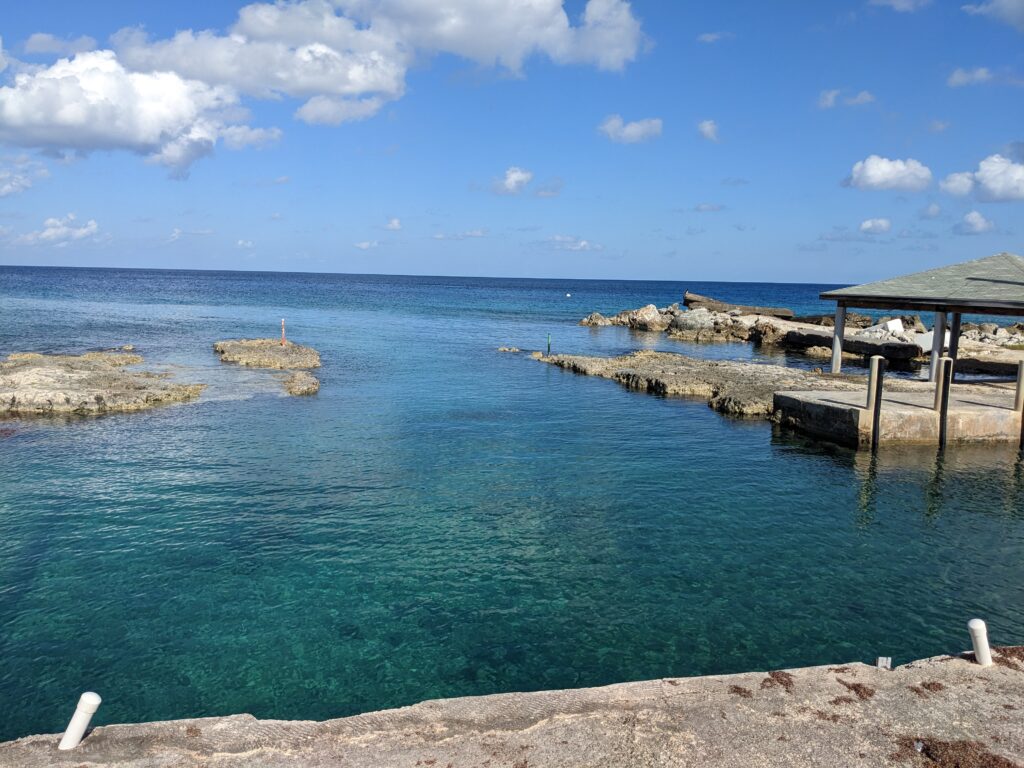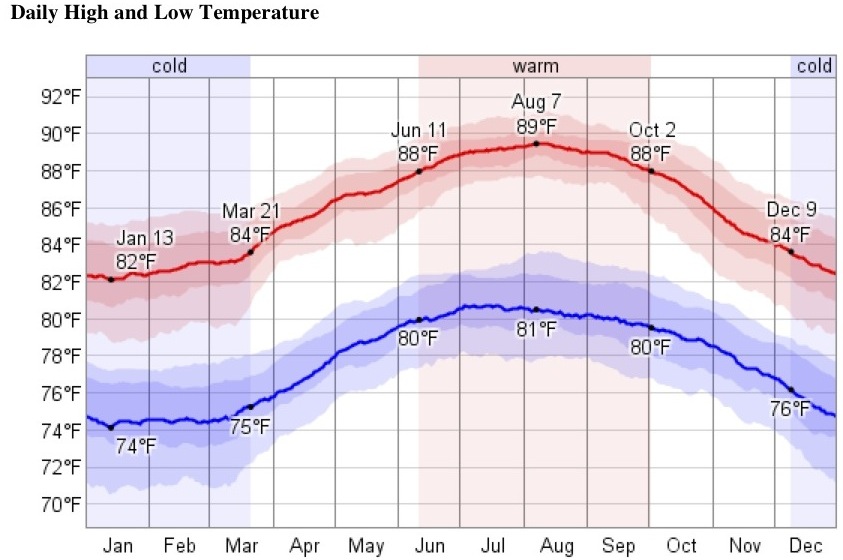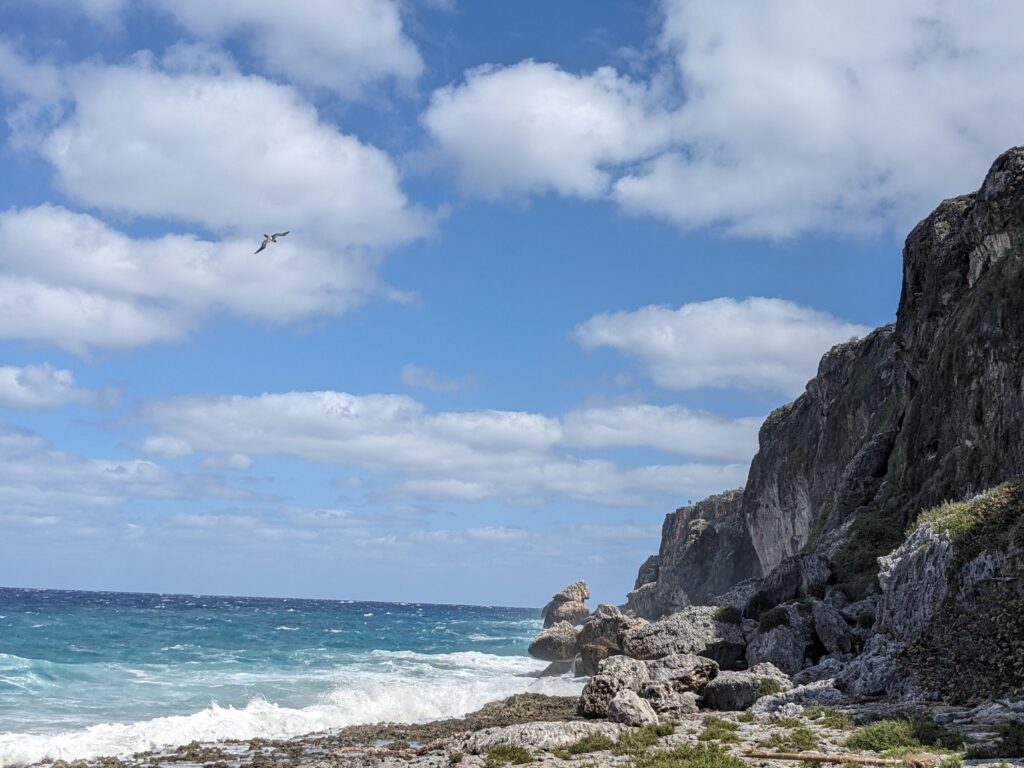
It’s hard to describe what’s so different about a vacation to Cayman Brac, because it’s not just great climbing in a tropical paradise. The small island setting, the snorkeling and world class scuba diving, tropical ecosystems, the friendly and hospitable people, and the relief of not having civilization pressing on you, all combine into a unique and wonderful experience. You will not want to leave this place at the end of your vacation and when that unfortunate time comes, you will immediately be looking forward to a return trip.
Long Beach, Cayman Brac
Cayman Brac (rhymes with “crack”) lies approximately 400 miles due south of Miami and is on the same latitude as Hawaii. The island is only 12 miles long and 1–1.5 miles wide, totaling 14 square miles with few roads and generally sparse development. It is home to approximately 2,000 full-time residents. It is named after the Gaelic name “brac”, meaning “bluff” which not surprisingly refers to the prominent cliffs rising to 140 feet at the eastern end of island.
Cayman Brac sits atop the Cayman Trench, one of the deepest trenches in the world, reaching depths of over 25,000 feet (the wall diving sites on Cayman Brac are some of the best in the world). The Cayman Islands are British Overseas Territory and are self-governed. English is the official language and the island has a dual currency system between Cayman Island Dollars (KYD or CI) and U.S. Dollars (1 CI = 1.2 USD).
Cayman Brac is NOT your typical Caribbean vacation destination. When most people think of a tropical island, they think of places like Hawaii, Grand Cayman, Florida Keys, or places in Mexico that are crawling with obnoxious sunburned tourists in flowered shirts and funny hats walking between high-rise hotels and pushy merchants hawking tacky, overpriced souvenirs in “tourist traps”. Cayman Brac isn’t like that. It’s still unspoiled by big industry or tourism. There are maybe 100 tourists at any given time. There are no high-rise condos, no traffic (no traffic lights), no lines, no problems, and virtually no crime. There are 2 small hotels and a few sandy beaches.
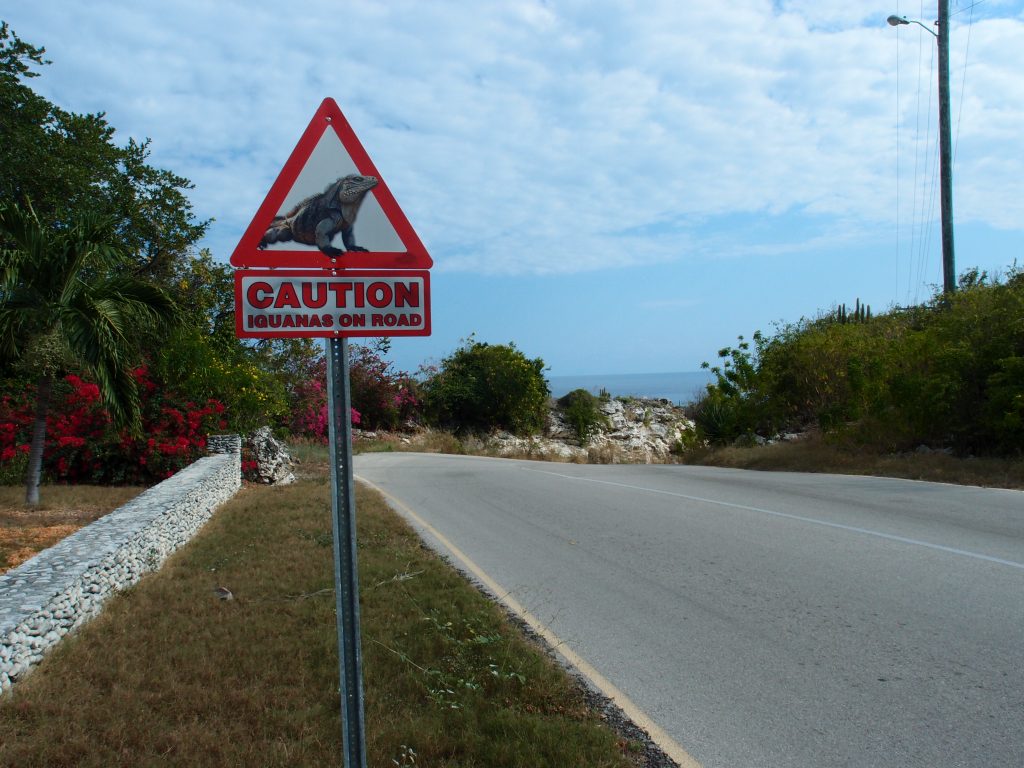
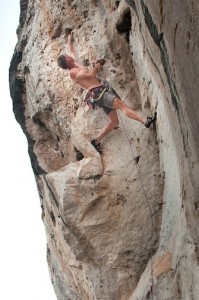
It’s unusual to find other climbers on the island so there are definitely no crowds or waiting for routes and the rock isn’t polished. When climbing at the Point or Wave Wall, you’ll see more sea turtles than people.
A video of climbing Spiral Staircase
Other Activities
Diving and snorkeling are very popular in the crystal clear water. The diving was rated in the top five destinations in the western hemisphere by Skin Diver magazine. There are two dive operations, and reservations are necessary. However, you don’t need to hire a boat, excellent shore diving and snorkeling are easy to access by car.
A video of snorkeling on the South Side.
Reef Divers operates in conjunction with Brac Beach Resort.
The Brac Scuba Shack is a independent, owner-operated dive operation which offers excellent service and smaller groups.
Fishing can be done from the shore or the cays, but for deep sea fishing inquire locally for captains.
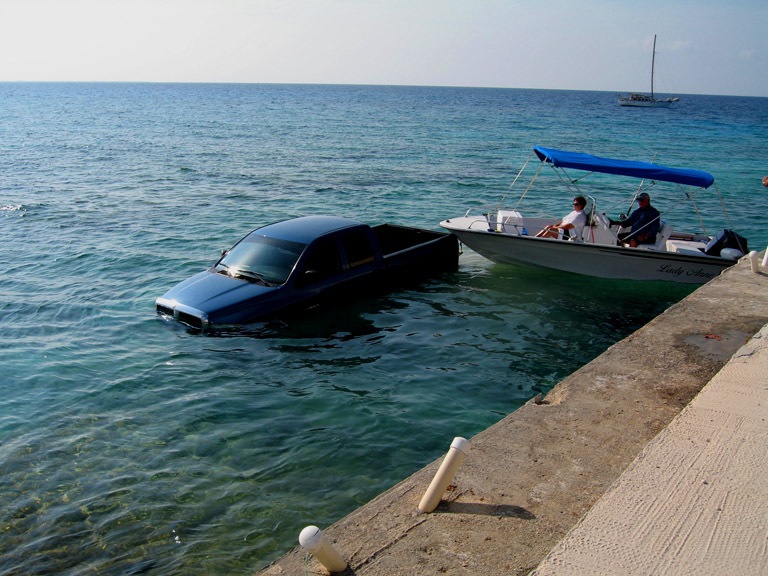
Nature hiking and birding are quite popular. There is quite a number of endemic species on the island such as the Cayman Parrot, Brown Boobies, Red Legged Thrush and the Rock Iguana.
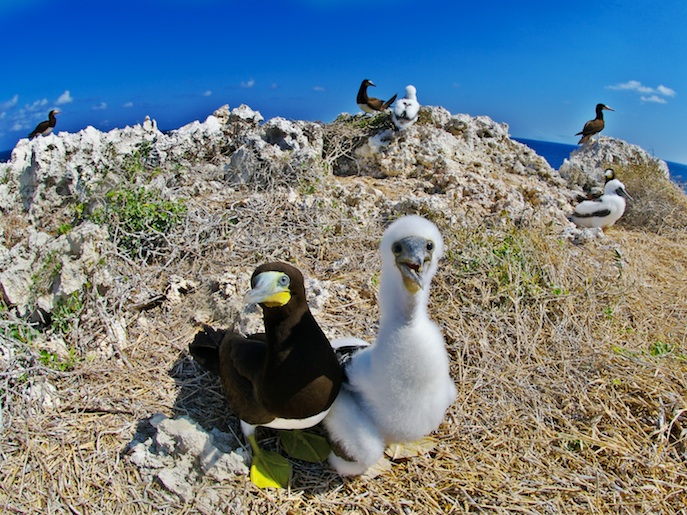
There are 14 caves on the island to explore. They also entail a lot of island history and are home to bats. The Great Cave houses a large bat population along the bluff.
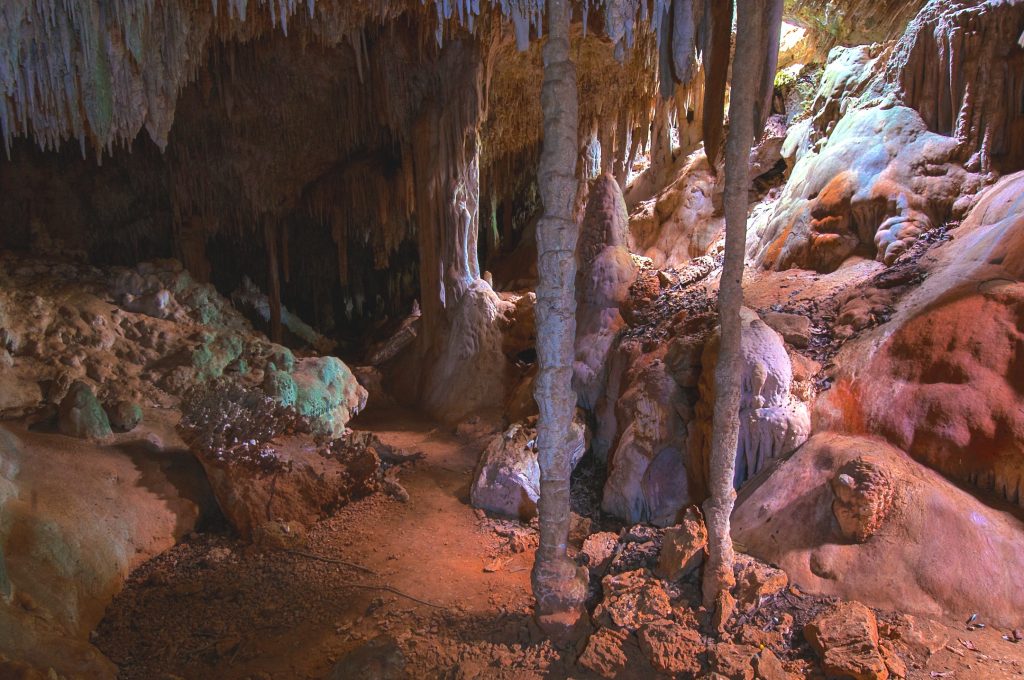
If you’re looking for fancy night clubs and hotspots, well, there aren’t any. The height of night-life is outdoor Movie Night, the Crab Races (BYOC), or Trivia Night at the Tipsy Turtle. Beware Karaoke Night!
There are several artists on the Brac who make unique and beautiful jewelry and sculptures from Caymanite and other natural materials.
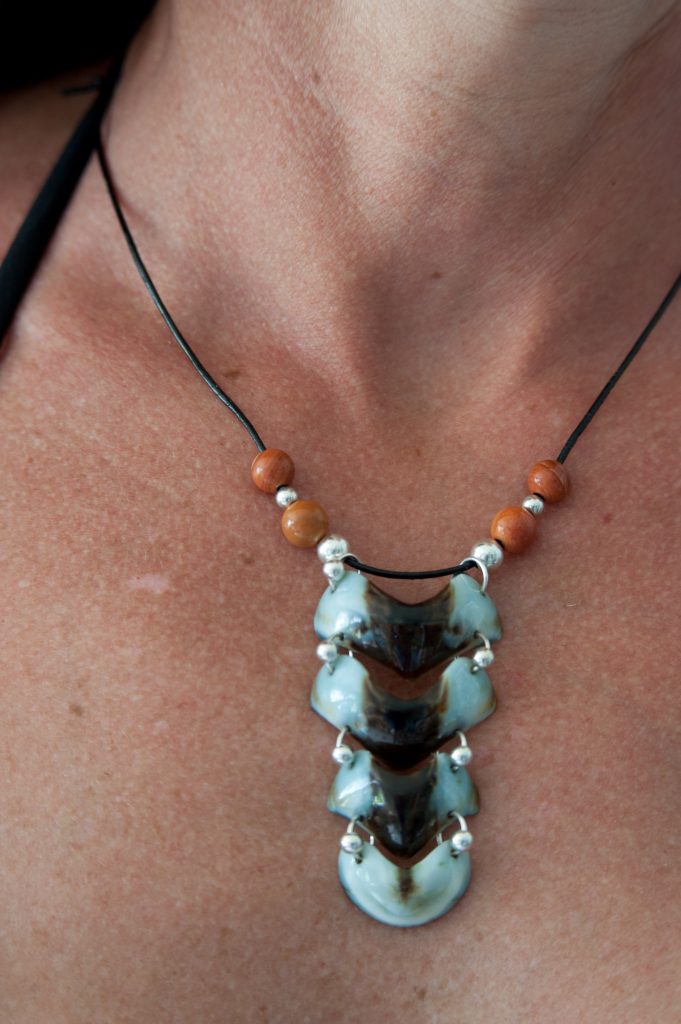
Weather and Season
Obviously, the time to visit a tropical island is in the winter. The best season for climbing is December through April, when it is cooler and rain and storms are few. Winter temperatures are generally 74-85F (24-29C), which many people think is too warm, but you always climb in the shade and the Trade Winds are generally steady and cool off the water. While there may be showers or an overcast day, extended rain is not really a worry. The wind is the big variable but if you’re flexible, and move to the “correct” side of the island, you can usually find good conditions. Into the lee for snorkeling or diving, into the wind for cool climbing.
Weatherspark.com will tell you the air and water temperatures throughout the year. It’ll also let you know when it is more likely to be muggy, cloudy, rainy, water temps, etc.

